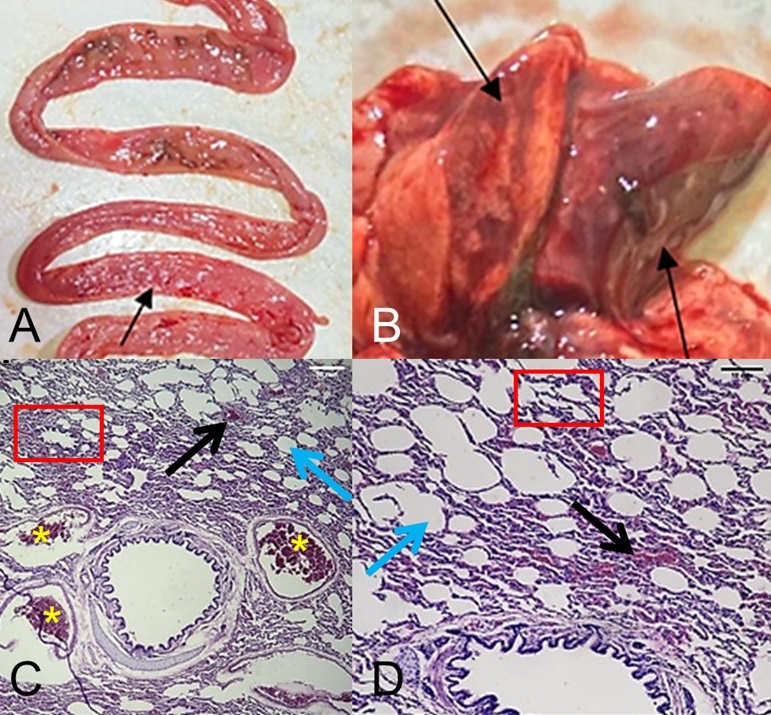Toxocariosis accompanied with conjunctivitis, scabies, thrombocytopenia in a domestic cat
Abstract
Toxocariasis, conjunctivitis, and scabies are common health issues in cats and are caused by nematode worms, viral or bacterial infections, and mites, respectively. This article reports a case involving a two-month-old female domestic cat named Jeni, who was brought to the veterinarian due to complaints of diarrhea, eye discharge, itching, skin lesions, and hair loss. Laboratory examinations revealed the presence of Toxocara cati eggs through faecal analysis using native and flotation methods, bacteria from a cytological examination of conjunctival smears later identified as Staphylococcus sp. through bacterial culture, and Sarcoptes scabiei from superficial skin scraping. A complete blood count showed leukocytosis, lymphocytosis, monocytosis, granulocytosis, thrombocytopenia, and hypochromic anemia. The patient was diagnosed with toxocariasis, conjunctivitis, scabies, and thrombocytopenia, with a guarded prognosis. Treatment included the administration of pyrantel pamoate, kaolin-pectin, chloramphenicol, dexamethasone eye drops, ivermectin, diphenhydramine HCl, and multivitamin syrup. Despite four days of treatment, the cat did not survive and died, after which an autopsy was performed. Gross pathological changes included intestinal and pulmonary hemorrhage, while histopathological examination revealed congestion and necrosis in the bronchioles, as well as hemorrhage and edema in the lungs. Necrosis was also found in the intestinal villi and crypts of Lieberkühn, supporting the diagnosis of toxocariasis, with suspected Toxocara cati larval migration to the lungs.
Downloads
References
Cardillo N, Sommerfelt I, Fariña F, Pasqualetti M, Pérez M, Ercole M, Rosa A, Ribicich M. 2014. A Toxocara cati eggs concentration method from cats' faeces, for experimental and diagnostic purposes. Experimental Parasitology. 144(2014):73-75. https://doi.org/10.1016/j.exppara.2014.06.013 | PMid:24959943
Darcy H, Simpson K, Gajanayake I, Seth M, McGrotty Y, Szladovits B, Glanemann B. 2018. Feline primary erythrocytosis: a multicentre case series of 18 cats. Journal of Feline Medicine and Surgery. 20(12):1192-1198. https://doi.org/10.1177/1098612X17750333 | PMid:29364032 PMCid:PMC11104208
Ellis J, Bell R, Barnes DC, Miller R. 2018. Prevalence and disease associations in feline thrombocytopenia: a retrospective study of 194 cases. Journal of Small Animal Practice. 59(9):531-538. https://doi.org/10.1111/jsap.12814 | PMid:29355998
Hnilica KA, Patterson AP. 2011. Parasitic Skin Disorders. In Small Animal Dermatology. WB Saunders. 120-158. https://doi.org/10.1016/B978-1-4160-5663-8.00005-7
Jackson HA, Marsella R. 2021. BSAVA manual of canine and feline dermatology.
Thrall MA, Weiser G, Allison RW, Campbell TW, editors. 2022. Veterinary hematology, clinical chemistry, and cytology. John Wiley & Sons.
Maggio F & Pizzirani S. 2009. Tear film and ocular surface diseases in cats and dogs: Part 1. Notes on pathophysiology. 23:35-51.
Okada N, Ooi HK, Taira K. 2021. Toxocara cati larval migration to mouse fetuses through transplacental infection. Veterinary Parasitology. 290:109350 https://doi.org/10.1016/j.vetpar.2021.109350 | PMid:33453644
Subrata IM, Oka IB, Agustina KK. 2017. Prevalence of intestinal worm in free ranging domestic cats in Bali. Jurnal Veteriner. 18(3):441-445. https://doi.org/10.19087/jveteriner.2017.18.3.441
Trbolová A. 2011. The most common eye diseases in cat. e-Polish Journal Veterinary Ophtalmol. 2:1-8.
Ursache AL, Gyorke A, Mircean V, Dumitrache MO, Codea AR, Cozma V. 2021. Toxocara cati and other parasitic enteropathogerns: more commonly found in owned cat with gastrointestinal signs in clinically healthy ones. Pathogens. 10(2):198. https://doi.org/10.3390/pathogens10020198 | PMid:33668439 PMCid:PMC7917965

Copyright (c) 2024 CC-BY-SA

This work is licensed under a Creative Commons Attribution-ShareAlike 4.0 International License.
Authors who publish with this journal agree to the following terms:
1. Authors retain copyright and grant the journal right of first publication with the work simultaneously licensed under a Creative Commons Attribution License that allows others to share the work with an acknowledgement of the work's authorship and initial publication in this journal.
2. Authors are able to enter into separate, additional contractual arrangements for the non-exclusive distribution of the journal's published version of the work (e.g., post it to an institutional repository or publish it in a book), with an acknowledgement of its initial publication in this journal.
3. Authors are permitted and encouraged to post their work online (e.g., in institutional repositories or on their website) prior to and during the submission process, as it can lead to productive exchanges, as well as earlier and greater citation of published work (See The Effect of Open Access).

.jpg)















